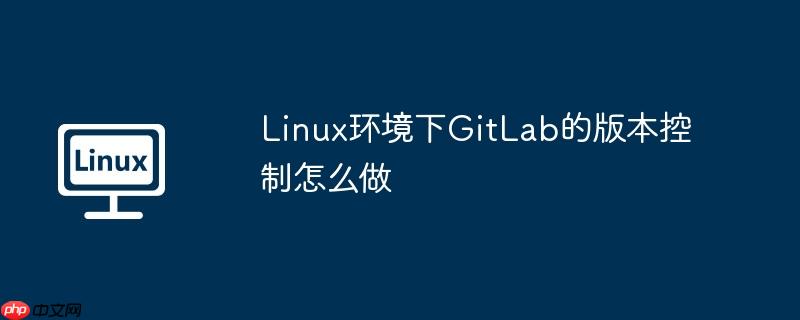
在Linux环境下利用GitLab实施版本控制,可依照以下步骤操作:
对于Ubuntu/Debian系统:
<code> sudo apt-get update sudo apt-get install -y curl openssh-server ca-certificates tzdata perl</code>
在CentOS/RHEL系统上:
<code> sudo yum update sudo yum install -y curl policycoreutils-python openssh-server perl</code>
利用官方提供的安装脚本安装GitLab CE(社区版):
Ubuntu/Debian系统:
<code> curl https://packages.gitlab.com/install/repositories/gitlab/gitlab-ce/script.deb.sh | sudo bash sudo apt-get install -y gitlab-ce</code>
CentOS/RHEL系统:
<code> curl https://packages.gitlab.com/install/repositories/gitlab/gitlab-ce/script.rpm.sh | sudo bash sudo yum install -y gitlab-ce</code>
设定外部URL:打开 /etc/gitlab/gitlab.rb 文件,设定 external_url 为你服务器的IP或域名。
<code> sudo nano /etc/gitlab/gitlab.rb # 查找并修改如下行 external_url 'http://your_server_ip' # 保存并退出</code>
重新配置并重启GitLab:
<code> sudo gitlab-ctl reconfigure sudo gitlab-ctl restart</code>
在你的本地电脑选择一个目录,然后运用以下命令克隆刚建的新项目:
<code> git clone https://gitlab.com/your-username/your-project.git</code>
进入克隆的项目目录,配置你的Git用户名和电子邮件地址:
<code> cd your-project git config user.name "Your Name" git config user.email "your-email@example.com"</code>
把你的项目文件加入Git仓库中:
<code> git add .</code>
提交暂存区的更改到本地仓库:
<code> git commit -m "Initial commit"</code>
将本地仓库的更改推送到GitLab上的远程仓库:
<code> git push -u origin master</code>
每当你对项目有改动时,重复以下步骤:
添加更改到暂存区:
<code> git add .</code>
提交更改:
<code> git commit -m "描述你的更改"</code>
推送到远程仓库:
<code> git push origin master</code>
你可以创建新分支用于功能开发或修复问题:
<code> git checkout -b new-feature</code>
完成工作后,将新分支合并到主分支:
<code> git checkout master git merge new-feature git push origin master</code>
通过上述步骤,你就能在Linux系统上借助GitLab进行版本控制了。
以上就是Linux环境下GitLab的版本控制怎么做的详细内容,更多请关注php中文网其它相关文章!

每个人都需要一台速度更快、更稳定的 PC。随着时间的推移,垃圾文件、旧注册表数据和不必要的后台进程会占用资源并降低性能。幸运的是,许多工具可以让 Windows 保持平稳运行。

Copyright 2014-2025 https://www.php.cn/ All Rights Reserved | php.cn | 湘ICP备2023035733号